Coronavirus: Australian workplaces face new rules as Scott Morrison meets with Jacinda Ardern
Meetings in small rooms will be off the cards for Australian workplaces, and interstate travel limited, as restrictions start to ease. It comes as Scott Morrison says a million Aussies must get back to work after a meeting with Jacinda Ardern.
PM: ‘We need to get a million Aussies back to work’
Shock projections for US virus death toll
New York’s lockdown will end ‘in phases’
Qantas sends rescue flights to Aussies stranded in India
No meetings in small rooms, limiting interstate travel and staggered start times will be the new normal for Australian workplaces as coronavirus restrictions ease.
Chief Medical Officer Professor Brendan Murphy said employers will need to enforce social distancing and hygiene procedures within the workplace for as long as the COVID-19 pandemic remains a threat.
“We don’t want everyone crowding in the lifts at the beginning of the day and the end of the day,” he said.
“We want staff to have a responsibility for hygiene. Hand sanitiser everywhere.
“People not shaking their hands.
“People not crowding into a small room for a meeting.”
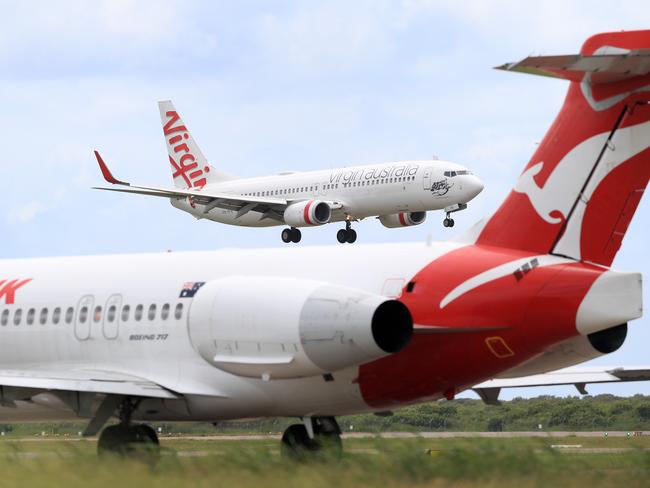
Prof Murphy said businesses should also use video meetings wherever possible.
“(No) travelling interstate for a meeting that you can do via video,” he said.
Prof Murphy said there was not enough known about the virus to give a “12 month” plan for Australia.
“Our strategy at the moment is to keep Australians safe over the next two to three to four months whilst safely relaxing restrictions so that we can get on with economic activity and our lives in a COVID safe way,” he said.”
“We will continually need to re-evaluate our strategy.
The government’s National COVID-19 co-ordination Commission chair Nev Power said the focus of every business now should be “restructuring” their worksite to comply with social distance and hygiene guidelines.

“Have plans in place and be ready as the restrictions change that you can continue to do that as more customers are coming into your business, as there is a higher level of activity and make sure that we continue to contain the virus as the economy starts to expand again,” he said.
Mr Power said if there were further coronavirus outbreaks in Australia, businesses needed to have a plan to respond so future restrictions could be avoided.
“We want to make sure we are able to deal with those quickly,” he said.
“We are all looking forward to having a more relaxed set of restrictions but we need to make sure we continue to do the right thing.”
PM: ‘WE NEED TO GET A MILLION AUSSIES BACK TO WORK’
Scott Morrison has said a million Australians must get back to work after Jacinda Ardern has said she is open to making trans-Tasman travel work.
The Prime Minister said the incredible $4 billion a week cost to the economy outlined by Treasurer Josh Frydenberg will continue “so long as we have Australians in a position where they are unable to open their businesses and go back to the offices, children unable to go back to school, and the many restrictions in place”.
“That is why the national cabinet has been working very effectively today as we move towards the decisions we need to take on Friday, that will impact on these restrictions in weeks and months that are ahead.”
He then outlined some of the effects of COVID-19 to date.
“By the end of the day, more than a million Australians will have had the claims process for JobSeeker,” he said.
“Around five million are estimated to be on JobKeeper. One million, or more, are accessing their own super, of almost $10 million. 384,000 businesses are accessing around $7 million in cash flow assistance, and that is just to date.”
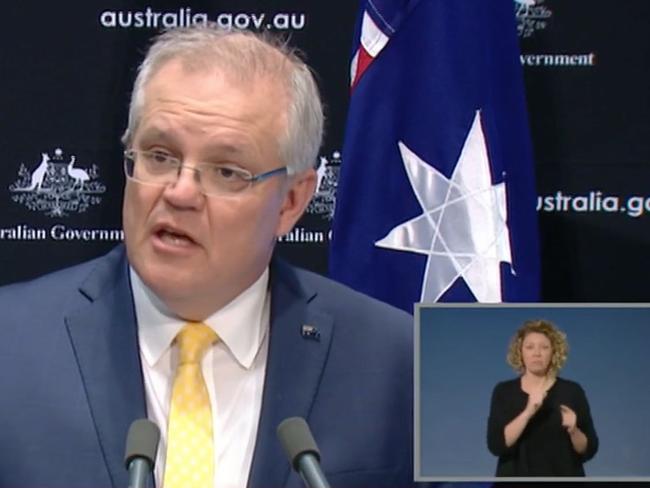
The Prime Minister said the National Cabinet and federal government were “under no illusion” about the ongoing costs of the COVID-19 restrictions.
“It certainly puts enormous pressure, as it should, on the timetable as we seek to move Australia back to that safe economy because of those significant costs, and as we plan our way back in getting there was a million Australians back to work, those costs are expressed in
so many different ways,” he said.
Mr Morrison said the social distancing rules and partial shutdowns have cost 11 per cent of GDP nationally.
“If you look at what is done in the areas that have had great restrictions, you can see that some three percentage points of that 11 per cent fall, but when you look at the jobs, 708,000 jobs estimated to be lost and impacted by these restrictions, specifically on those industry sectors,” he said.
Mr Morrison said nationally there had been about 441,000 hospitality jobs lost, 146,000 in retail services, 120,000 in construction, and about 108,000 from arts and recreation.
Almost 500,000 jobs have been lost in NSW alone, estimated to have the highest number of losses, followed by Victoria and then Queensland.
Guidelines for the reopening of a wide range of workplaces have been created by the Federal Government in a bid to enable the economy to restart.
Attorney General Christian Porter said they would provide on “very granular detail” on how businesses can start to reopen in a way that is safe, from how to use PPE and how to social distance in a workplace environment.
COVID-19 Coordination Commission chairman Nev Power said a lot of work had been done to make sure Australians could return to work soon and safely.
“That has gone really well,” Mr Power said.
“Businesses will have a complete toolkit.”
More than 100 businesses and peak bodies were called in to speak with members of the commission to create the guidelines.
HARSH REALITY OF VIRUS OUTBREAK
A virus outbreak at a Melbourne abattoir was to blame for most of the nation’s most recent coronavirus cases, with a national increase of 25 cases over the past 24 hours.
Despite the jump to 6849 total cases, Chief Medical Officer Brendan Murphy said Cedar Meats was a good example of how to clamp down and trace when an outbreak occurs.
“Mostly it relates to the Victorian meatworks outbreak which, I have to say, has been expertly controlled by the Victorian health department with very, very extensive tracing of contacts, isolation and quarantine” Mr Murphy said today.
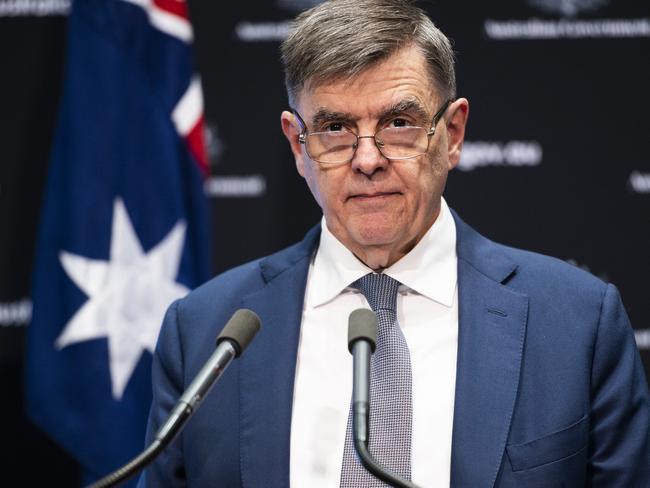
MORE NEWS
Stars shock in wild Met Gala outfits
WAGS reveal secrets to lockdown success
Salons reopen with massive changes
“We will likely see outbreaks and we have been saying for some time that the most important thing is when we do get an outbreak, given the very, very infectious nature of this virus that we have to have that capacity to quickly test, trace, isolate and quarantine, which is exactly what has happened in that outbreak.”
Mr Murphy said the outbreak was a good example of why Australians should download the COVIDSafe app, that so far more than 4.9 million people have signed up for.
“We’re tantalisingly close to 5 million,” he said.
“Our target population are the 16 million adult Australians with smartphones and we do need more if we do get outbreaks in the future that we want to control quickly, the app will be a very significant help to us.”
ARDERN OPEN TO TRAVEL WITH NZ
A trans-Tasman travel “bubble” will not include a compulsory quarantine period, but New Zealand Prime Minister Jacinda Ardern says safety remains “top of mind” for any potential easing of restrictions.
Speaking after she dialled into a National Cabinet meeting with Prime Minister Scott Morrison and state and territory leaders, Ms Adern said she felt “comfortable and confident” New Zealand would not receive COVID-19 cases from Australia if travel between the two countries resumed.
“Equally we won’t export them,” she said.
Ms Adern said relaxing the travel ban would not mean imposing a 14-day quarantine requirement.
“The whole purpose of us discussing the possibility of having a bubble of sorts between us, a safe zone of travel, would be so that you wouldn’t have to have a quarantine attached,” she said.
“I think everyone would acknowledge it would be prohibitive.
“People wouldn’t travel if they had to stay on either side in quarantine for a two-week period and have to do the same when you return.
Ms Adern said there was “still a lot of work to be done” before the idea could progress.
“But it is obviously being floated because of the benefits that it would bring,” she said.
Ms Ardern’s participation in the National Cabinet was the first for a New Zealand leader since former prime minister Peter Fraser attended Australian war cabinet meetings in World War II.
Ms Ardern said there were a “lot of similarities” in how both countries had tried to get on top of the COVID-19 outbreak.
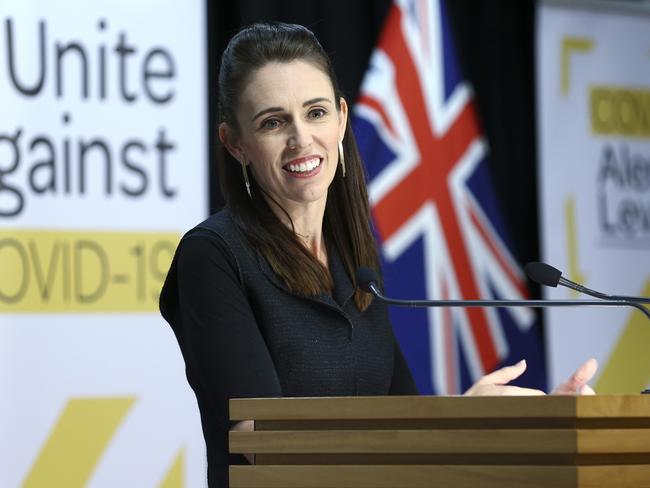
“Neither of us want cases of COVID coming between our countries,” she said.
“Neither of us would want the burden of that. I think, regardless of our future path we will be looking for ways to do it safely is top of mind.”
Ms Ardern said Australians and New Zealanders travelled “across the ditch more than anywhere else”.
“New Zealand is Australia’s largest source of tourists apart from China, with 1.6 million Aussies visiting us,” she said.
“So we both stand to benefit from getting travel up and running again.
Ms Ardern said part of the reason for the large amount of travel was families visiting each other as there are more than half a million Kiwis in Australia.
“Also we are Australia’s largest export market,” she said.
“18,000 Aussie businesses trade with New Zealand which means we are especially critical for Australian SMEs so the case for increasing economic relations when safe is clear.”
Ms Adern said the discussion about relaxing restrictions between the two countries was only possible as a result of the “world leading actions” both have taken to stop the spread of COVID-19.
The virus outbreak at the Melbourne meat factory was also discussed.
She said the surge in cases highlighted the importance of getting on top of the virus before a trans-Tasman travel bubble could be introduced.
“We have seen across the ditch very low numbers and then it can only take one outbreak in one workplace or one environment to suddenly to that uptick and that is why it is so important we stick with our restrictions,” Ms Ardern said
“There are a lot of similarities in the way that we have each tried to manage COVID and get on top of it and get back in control, and therefore these, the same goes for both of us.
“Neither of us will cases of COVID coming between our countries. Neither of us we want the burden of it.
“Regardless of our future path, we’ll be looking for ways to do it safely.”
AUSSIES WANT MORE THAN $40 A DAY
Most Australians think unemployment support should not return to its pre-coronavirus rate of $40 per day once the pandemic subsides.
Essential polling shows 57 per cent of Australians think JobSeeker should not be cut to its previous amount, while 15 per cent were unsure.
The payment has been doubled to about $1100 a fortnight but the government says it will be slashed at the end of September.
Australian Council of Social Service chief Cassandra Goldie says the JobSeeker payment, formally known as Newstart, must be enough for people to survive. “It’s clear we need a permanent fix to our social safety net. Our income support system was cruel before this crisis began,” Dr Goldie said.
“We can never go back to the brutality of trying to survive on $40 a day. We need a secure safety net that protects us all from poverty.” The government has resisted pressure, even from conservatives, to increase the usual rate of the payment.
Labor supports an increase but hasn’t been specific as to the amount. Dr Goldie says reducing the rate after coronavirus will stall recovery. “We need a decent social security safety net in place that works at all times,” she said.
US DEATH RATE EXPECTED TO WORSEN
A new document has reportedly revealed that the Trump administration expects America’s daily death toll from coronavirus to double in June.
According to a document obtained by The New York Times, the Trump administration expects COVID-19 deaths in the US to reach 3000 per day. The current level stands at 1750 per day.
It comes as the global death toll from coronavirus passed 247,000. There have been 3.5 million cases but 1.1 million recoveries, according to the Johns Hopkins University tally.
The US projections, based on modelling by the Centres for Disease Control and Prevention and pulled together in chart form by the Federal Emergency Management Agency, forecast about 200,000 new cases each day by the end of the month, up from about 25,000 cases now.
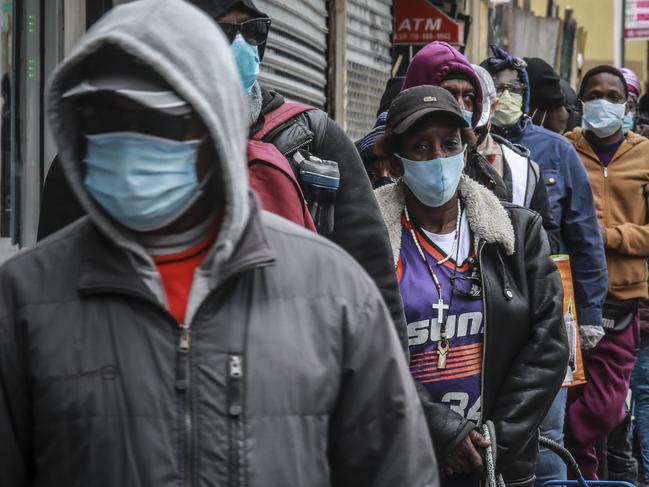
Dr Deborah Birx, the co-ordinator for the White House coronavirus response, said on Sunday that the original projections “have always been between 100,000 and 240,000 American lives lost, and that’s with full mitigation and us learning from each other of how to social distance.”
However Nate Silver, the editor-in-chief of the analysis and polling website FiveThirtyEight, suggested the numbers should be taken with a grain of salt.
“Projecting 200K new detected cases each day by the end of the month from a current baseline of 30K is also a lot, even with quite pessimistic assumptions,” Mr Silver said.
“I would encourage some caution with taking these at face value.”

During an interview with Fox News in the US on Sunday night, Mr Trump doubled his estimate of the expected American death toll from what he said just two weeks ago.
“We’re going to lose anywhere from 75, 80 to 100,000 people,” Mr Trump said.
“That’s a horrible thing. We shouldn’t lose one person over this.”
QANTAS TO SEND FLIGHTS TO AUSSIES STRANDED IN INDIA
Hundreds of Australians stranded in India due to coronavirus restrictions will be recused on Qantas planes over the coming week.
Three flights were chartered in a bid to get the most vulnerable Aussies home, where they will then face a fortnight of quarantine.
One of the three flights will fly from Delhi into Melbourne on Friday, with flights arriving in Sydney on Friday and Sunday.

The mission comes after a similar set of rescue flights was arranged through Qatar Airways.
Foreign Minister Marise Payne said DFAT had worked hard to bring the Aussies home in trying circumstances.
“The situation in India has been, and remains, complex with Australians located across 27 Indian states and with internal and external travel restrictions continuing to apply,” Ms Payne said.
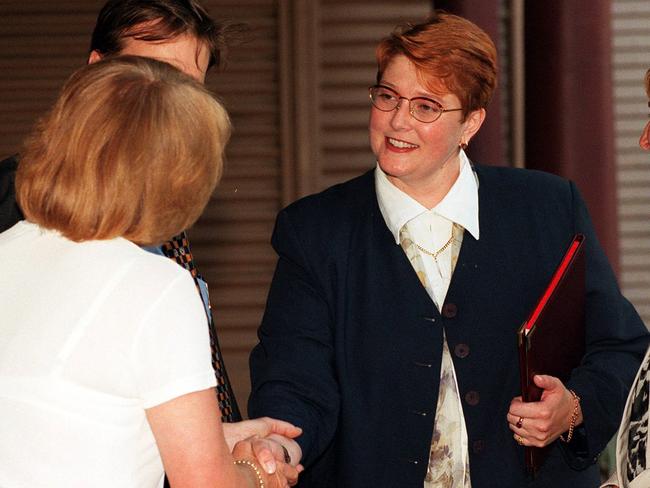
“It is a credit to Qantas and to the hard work of our Department of Foreign Affairs and Trade officials in India that more Australians will soon be returning on these three Qantas flights.”
Hundreds of Australians will remain trapped in India after the flights are more are expected to be planned.
Vulnerable and short-term visitors were prioritised for the flights this week.
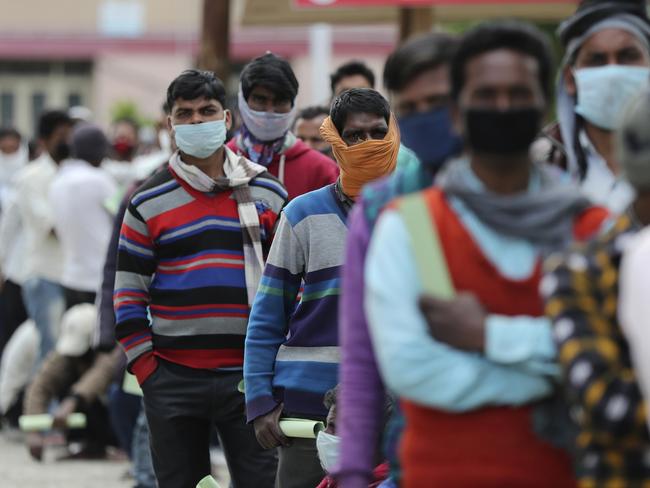
RE-OPENING NEW YORK WILL HAPPEN ‘IN PHASES’
New York Governor Andrew Cuomo said reopening hard-hit New York’s economy will take place on a region-by-region basis, and in phases.
“This can’t be, ‘we want to get out of the house, we’re going’, No,” said Gov. Cuomo on Monday (local time).

New York has 313,000 confirmed coronavirus cases and close to 19,000 deaths.
Four factors will dictate when regions can open: availability of tests, contact tracing, hospital capacity and monitoring of virus transmission.
On Gov. Cuomo’s executive order, New York is currently closed until May 15.
Businesses will also open in phases, beginning with construction, manufacturing and outside pick-up for some retail stores.
If transmissions do not spike, the phases could continue with some professional services such as retail, following by restaurants in the third phase with restaurants, and finally large events such as sports.
Some regions of New York are closer to reopening than others.
— Andrew Cuomo (@NYGovCuomo) May 4, 2020
Currently, no region meets all the requirements necessary to reopen safely and securely.
There is a lot of work to do. pic.twitter.com/OWaKHUeUUa
“We need businesses to reimagine how they’re going to do business, and get ready to protect their workforce,” said Gov. Cuomo.
He later added, “Putting all these systems in place is an incredible task.”
Gov. Cuomo also hit out at New Yorkers who were not wearing face masks in public after pictures emerged of unmasked people in a packed Central Park over the weekend.
Gov. Cuomo said it is “disrespectful” of people not to wear masks when necessary, and that the measure is “not that hard”.
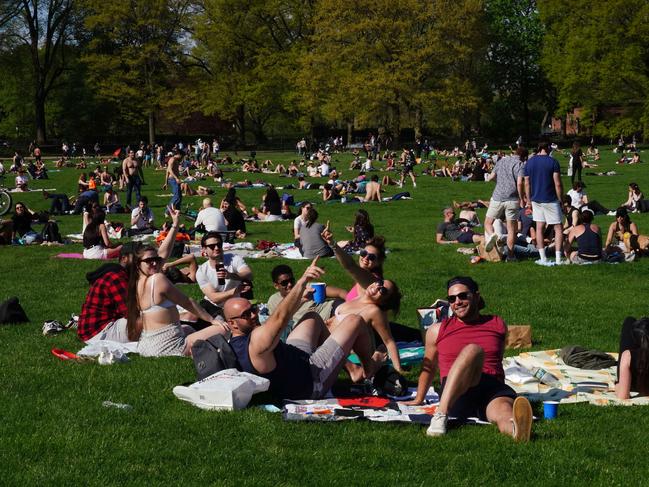
Gov. Cuomo said people who refuse to wear masks are effectively disrespecting the work of nurses and doctors.
“They went to work so all of us could stay safe and go home,” Gov. Cuomo said, arguing that wearing a mask was the least New Yorkers could do for frontline workers.
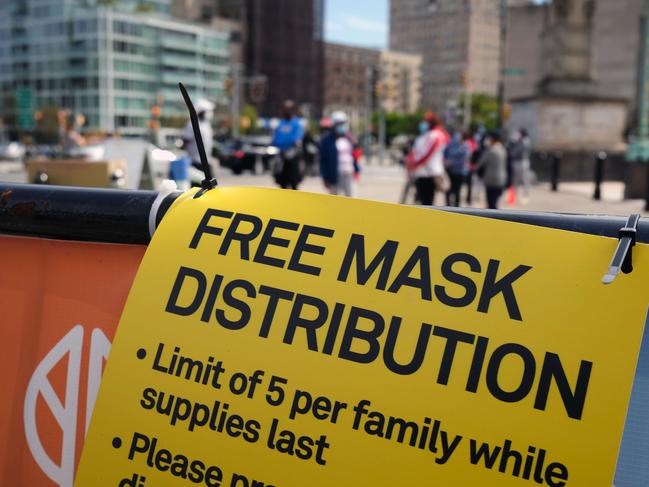
ITALY EASES LOCKDOWN, US LIFTS SOME RESTRICTIONS
Meanwhile millions of people were allowed to return to work in Italy as Europe’s longest coronavirus lockdown started to ease, while the US took steps to lift some restrictions even as tens of thousands of new cases were reported every day.
In Washington, the Senate was convening for the first time since March while dozens of people in Florida were waiting before sunrise for the 7am opening of Clearwater Beach.
In South Dakota, a shuttered pork processing plant took its first steps toward reopening after more than 800 employees were infected with coronavirus.
Louisiana politicians were also restarting their legislature – even as they feuded over whether they should return at all.

More than 29,000 people in Louisiana have tested positive for the coronavirus, and 1969 people have died. The true number of infections is thought to be far higher.
With pressure growing in many countries for more measures to restart the economy, politicians also were trying to boost funding for research into a vaccine for COVID-19.
There are hopes that one could be available in months, but many scientists warn it could take much longer.
Italy, the first European country hit by the pandemic and a nation with one of the world’s highest death tolls, began opening up cautiously after its two-month shutdown.
In all, 4.4 million Italians were able to return to work, and restrictions on movement eased.
Traffic in downtown Rome picked up, construction sites and manufacturing operations resumed, parks reopened and flower vendors returned to the Campo dei Fiori market for the first time since March 11.
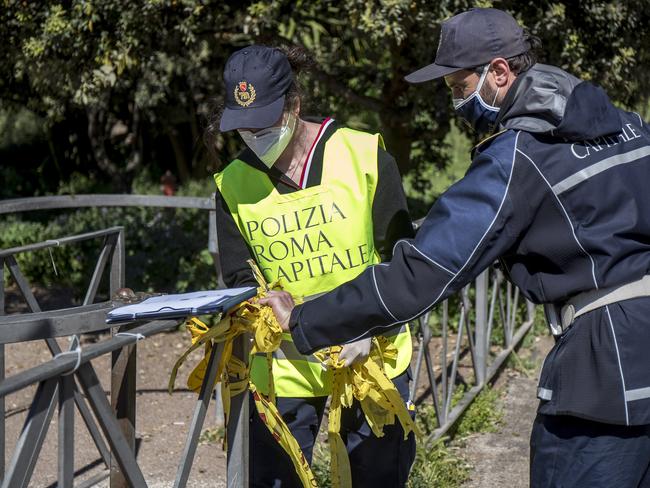
“It’s something that brings happiness and joy, and people have been missing that these days,” vendor Stefano Fulvi said.
He doesn’t expect to break even anytime soon, “but you have to take the risk at some point.” But Europeans’ new-found freedoms are limited as officials are wary of setting off a second wave of infections.
In Italy, mourners were able to attend funerals, but services were limited to 15 people and there was still no word on when Masses will resume.
Restaurants scrubbed their floors in preparation for take-out service, but sit-down service was several weeks away.
“It’s a new page that we must write together, with trust and responsibility,” Premier Giuseppe Conte said in a message to Italians.
People in hard-hit Spain ventured out for the first time in weeks for haircuts or food take-outs, but many small shops were still closed as owners worked on meeting strict health and hygiene guidelines.
There was limited easing on quarantine regulations on businesses in Portugal and Belgium.
On Europe’s western edge, Iceland reopened many of its businesses after the country tamed its virus outbreak.

India allowed some economic activities to resume after a five-week halt, even as the pace of infections has slightly accelerated.
The lockdown has achieved a slowdown in the spread of the virus but has caused immense hardship for India’s poor.
An estimated 1.5 million South Africans returned to work after a five-week lockdown.
The mining, manufacturing and select retail sectors began reopening with up to 30 per cent of their workforce.
Trains, buses and private minibus taxis resumed operations with reduced occupancy, and all South Africans must wear face masks in public.
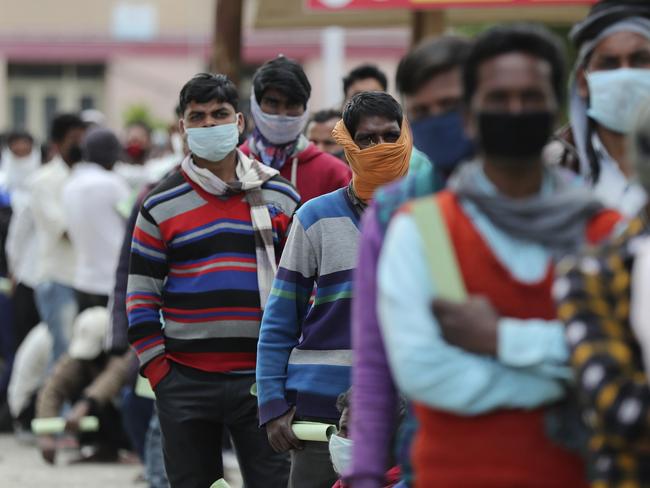
Russia reported a steady rise in the number of infections, fuelling concerns the nation’s hospitals could be overwhelmed. Authorities say that broader testing has contributed to a surge.
Russia’s economy has been partially shut since late March, and lockdown measures have been extended through May 11.
Governments around the world have reported 3.5 million infections and more than 247,000 deaths, including more than 67,000 dead in the United States, according to a count by Johns Hopkins University.
Deliberately concealed outbreaks, low testing rates and the severe strain the disease has placed on health care systems mean the true scale of the pandemic is undoubtedly much greater.
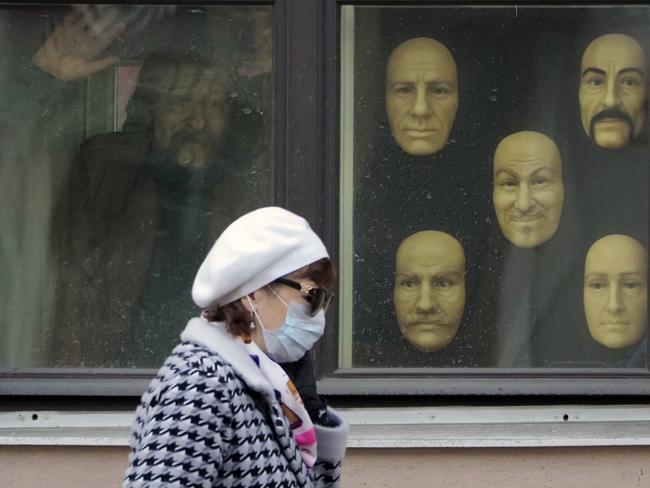
CHINA HITS BACK AT US ‘COVER UP’ CLAIMS
Chinese state media have hit back at the US, accusing President Donald Trump’s administration of trying to distract from its own “incompetence” with allegations about the spread of the coronavirus.
The commentary in the Global Times newspaper, published under the auspices of the Chinese Communist Party’s People’s Daily, dismissed as “groundless” allegations China had covered up the scale of the coronavirus outbreak.
US Secretary of State Mike Pompeo’s claim intelligence agencies were following up “significant” evidence the virus came from a laboratory in the Chinese city of Wuhan was “bluffing,” it added.
“The truth is that Pompeo does not have any evidence,” the paper wrote.
“If Washington has solid evidence, then it should let research institutes and scientists examine and verify it.”
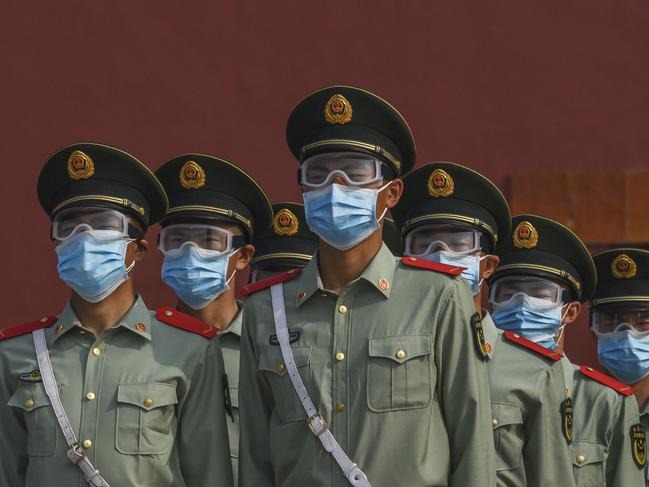
The US government’s goal was to blame China for the pandemic, the paper wrote, as well as to manipulate public opinion and to avoid being accused of “pandemic malfeasance.”
“The ultimate goal now is to win the election,” the paper wrote of President Donald Trump’s efforts to gain a second term in November.
Canadian Prime Minister Justin Trudeau meanwhile said it was “too early to draw firm conclusions” about the theory the coronavirus originated in a Chinese laboratory, local media reported.
Canada is a member of the Five Eyes intelligence alliance with the United States, the United Kingdom, Australia and New Zealand.
Scientists consider it more likely the virus was transmitted to humans from bats via another animal.
The US intelligence community last week concluded that the virus was not man-made.
